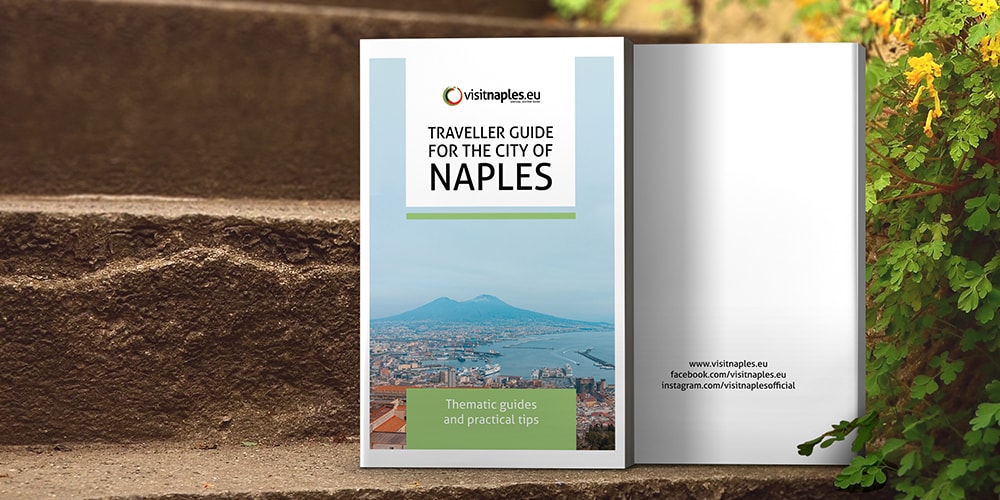Naples is the casket of fascinating hidden treasures. If you want to uncover the veil of mystery lying on the face of this enigmatic city, then follow the straight lines that we are going to give you and let yourself be surprised by these three mysterious paintings placed in streets and places of Naples rich in history, art and beauty.
The three masterpieces that we are going to present are the following: the canvas hidden in the Church of San Giorgio Maggiore, one of the first four churches built in Naples; the panel with the devil-woman portrayed in the Church of Santa Maria del Parto, located in the Chiaia district and house of the tomb of Jacopo Sannazaro and the crib of Giovanni da Nola; the effigy with the Crucifix speaking to St. Thomas placed in the Monumental Monastery of San Domenico Maggiore, situated in the heart of the historic part of Naples, along the lower decumano of the city (Spaccanapoli).
3. The panel with the Crucifix speaking to St. Thomas
With regard to mysterious paintings, in the lively historic centre and within the prestigious home of the Dominican Friars, it is worth to admire the panel titled "The Crucifix". It is considered miraculous because it was identified as the painting that spoke to St. Thomas Aquinas during his last stay in Naples in 1273. This is a rare example of 13th century paintings in Campania, which the religious tradition has preserved to date. The work is dramatic and intense. A picturesque and gentle humanity comes from the anonymous artist's brushstrokes that made the work.
According to the legend, the miraculous Crucifix said to St. Thomas Aquinas the following words: "Thomas, you have written well of me. What reward do you want?” The saint replied: "Nothing but you, Lord." The original painting is right in a cell of the convent where the saint lived and taught. In addition, his copy is preserved in the church precisely in the “Cappellone del Crocifisso” (Crucifix Chapel).
2. The Devil of Mergellina
Still talking about mysterious paintings, placed in the celestial scenery of Mergellina, the Church of Santa Maria del Parto houses a panel depicting a diabolical subject. It is about San Michael that drives away the devil, a painting also known as "The Devil of Mergellina", painted by Leonardo Grazia from Pistoia in 1542. The panel depicts the warrior figure of the Archangel Michele, who drives the devil out of the sky. The devil has the face of a beautiful blond-haired woman. Anyway, it seems that the painting conceals a more mysterious and extravagant story, halfway between sorcery and seduction.
The devil-woman depicted in the painting represents
Vittoria D'Avalos, a beautiful Neapolitan noblewoman who fell in love with the fascinating
Diomede Carafa, the Bishop of Ariano Irpino. She used a powerful love spell to try to enchant the churchman and get him to love her. The elixir gave to Carafa an insane love. This compromised his ecclesiastical career. Victory was his devil. Diomedes thought he would use a good exorcist to break Victoria's spell. He summoned a monk expert in necromancy, magic and exorcism. The monk advised Diomedes to find a valid painter and commission him a special painting whose colours had to be mixed with a special balm, useful for the ritual. It had to portray the Archangel Michael, the warrior of God who embodied the power of the good, and the devil, portrayed with the face of Victory, which embodied the power of evil. After this, the woman renounced the love for the cardinal. The cardinal, in order to celebrate his victory, made engrave the following inscription on the work:
«Fecit victoriam alleluia 1542 Carafa»
1. St. George and the Dragon
The last stage takes to Church of San Giorgio Maggiore, named after the warrior martyr. This saint is one of the most impressive Christian figures, which links to the imaginative myth of the Dragon; an emblem of the infinite struggle between good and evil. The basilica was built by the will of Bishop Saverio of Naples between the end of IV and the beginning of the V century AD. Behind the main altar wrapped in a semicircle of white columns, you can admire two masterpieces of Neapolitan painting of the sixteenth century. The two majestic canvases which are harmoniously arranged facing each other were painted by Alessio D’Elia. The canvas on the left side represents the “life of San Severo” while the one on the right side depicts the battle of "St. George and the Dragon."
The hidden fresco, still intact, was discovered thanks to a recent restoration. Its colours are still brilliant. It was painted by Aniello Falcone around 1645 and its artistic value is astounding. The work has an intense emotional charge and a suggestive impact that takes the viewer back to the fairytale atmosphere of medieval myth. The protagonist of the scene is the white horse that rears up, led by the fearless warrior Saint George, who pierces the monstrous creature with a sharp spear. The dragon is portrayed as an extraordinary beast of pure fantasy fighting the warrior. By killing the dragon, St George saves the king's young daughter, who was about to be sacrificed to the unclean creature, and frees the entire population of Selem from its clutches.
-min.png)
.png)
.png)










Lascia un commento